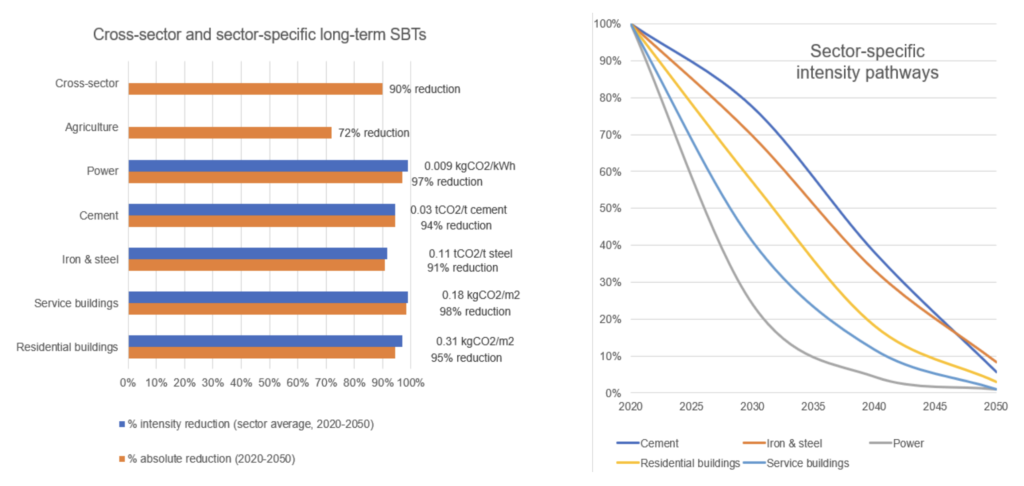
Achieving net-zero emissions is a critical goal for corporates committed to combating climate change. The journey to net-zero involves several structured steps that ensure reductions in greenhouse gas emissions are science-based and verifiable. This blog explores the practical steps companies can take to report their progress towards net-zero emissions, referring to the SBTi Corporate Net-Zero Standard.
1. Set Near-term and Long-term Science-Based Targets (SBTs)
Near-term SBTs: Corporates should aim to set 5-10 year emission reduction targets aligned with 1.5°C pathways. These targets should cover at least 95% of company-wide scope 1 and 2 emissions and 67% of scope 3 emissions if they make up more than 40% of total emissions.
Long-term SBTs: These targets focus on reducing emissions to a residual level consistent with 1.5°C scenarios by 2050 at the latest. They should cover 95% of scope 1 and 2 emissions and 90% of scope 3 emissions.
2. Develop a Comprehensive Emissions Inventory
Create an inventory that includes scope 1 (direct emissions), scope 2 (indirect emissions from energy consumption), and scope 3 (all other indirect emissions across the value chain). The inventory should cover at least 95% of emissions in scope 1 and 2, and all relevant categories of scope 3 emissions.
3. Establish a Base Year
Choose a base year for tracking emissions performance consistently over the target period. This year should reflect a typical GHG profile for the company and be no earlier than 2015. Ensure the same base year is used across all targets.
4. Implement Emissions Reduction Strategies
- Operational Changes: Improve energy efficiency, switch to renewable energy sources, and implement low-carbon technologies.
- Supply Chain Engagement: Work with suppliers to reduce their emissions.
- Product and Service Innovations: Design products that are more energy-efficient and have lower lifecycle emissions.
5. Neutralization of Residual Emissions
Once long-term SBTs are achieved, any remaining emissions must be neutralized through permanent removal and storage of carbon from the atmosphere. This could involve investing in carbon removal technologies or natural solutions like reforestation.
6. Beyond Value Chain Mitigation
Companies are encouraged to take action beyond their value chains, such as purchasing high-quality carbon credits or investing in community-based climate projects, to further support global net-zero goals.
7. Monitoring, Reporting, and Verification (MRV)
Regularly monitor emissions and report progress towards targets. Verification by an independent third party is crucial to ensure transparency and credibility. Corporates should disclose their progress annually, detailing the measures taken and the impact on emissions reduction.
Sector-Specific Pathways
As shown in the attached graph, different sectors have varying pathways and intensity targets:
- Power Sector: Achieve a 97% reduction to 0.009 kgCO2/kWh by 2050.
- Cement: Target a 94% reduction to 0.03 tCO2/t cement.
- Iron & Steel: Aim for a 91% reduction to 0.11 tCO2/t steel.
- Service Buildings: Reduce emissions by 98% to 0.18 kgCO2/m2.
- Residential Buildings: Achieve a 95% reduction to 0.31 kgCO2/m2.
Firstgreen Consulting’s Role in Corporate Net Zero Pathways
At Firstgreen Consulting, we specialize in providing comprehensive services to help corporates achieve their net-zero targets. Our expertise includes:
- Carbon Credit Services: Assisting in the development and management of carbon credit projects.
- Energy Efficiency Services: Implementing strategies to improve energy efficiency across operations.
- Sustainable Building Certifications: Guiding companies in achieving green building certifications.
- Renewable Energy Integration: Facilitating the switch to renewable energy sources.
- Monitoring and Reporting: Offering robust MRV systems to ensure transparent and accurate reporting of emissions reductions.
By partnering with Firstgreen Consulting, companies can confidently navigate the path to net-zero, contributing to a sustainable future while meeting regulatory and stakeholder expectations.
